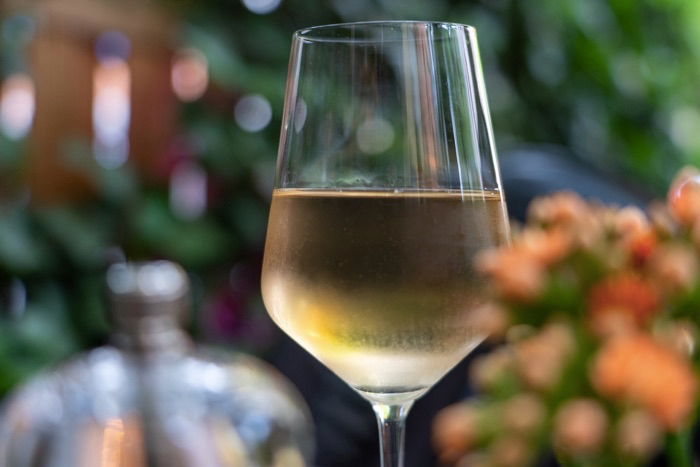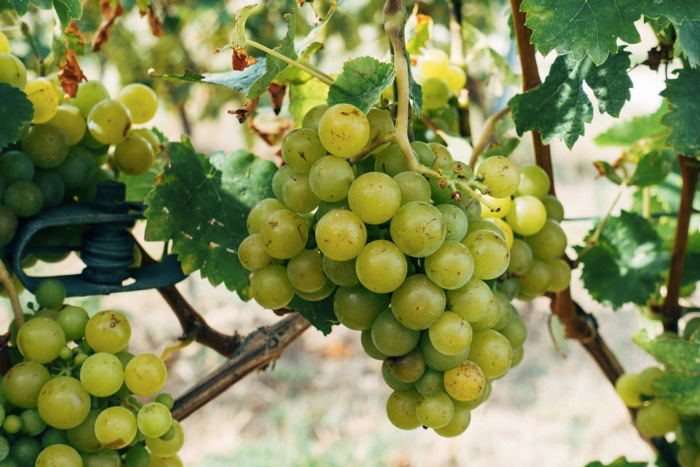White Wine Basics
Discover the enchanting world of white wine - from grape varieties to its characteristics.

White wine is a beloved libation that enthusiasts have enjoyed for centuries. With its crisp and refreshing qualities, it serves as the perfect accompaniment to a variety of occasions, from sophisticated dinners to informal gatherings with friends.
However, navigating the world of white wine can often be overwhelming, given the multitude of grape varieties, regions and production methods available. To fully appreciate and understand this versatile beverage, it becomes essential to delve into the white wine basics: its making process, characteristics and popular varietals.
In this article, we will take you on a journey through the fascinating world of white wine, providing you with the fundamental knowledge that will enable you to make informed decisions as you explore different options in your search for the perfect bottle.
How is White Wine Made?
The process of making white wine involves several steps that ultimately lead to its distinct flavours and characteristics.
First, the grapes used for the production of white wine are usually white or light-coloured varieties, such as Chardonnay, Sauvignon Blanc or Riesling. These grapes are harvested when they reach optimum maturity, usually in late summer or early autumn.

After harvesting, the grapes undergo a process called crushing and pressing. This involves gently breaking the skins of the grapes to release their juices without extracting tannins or harsh pigments. The resulting juice is then transferred to fermentation vessels where yeast is added.
Fermentation converts the natural sugars in the grape juice into alcohol over one to three weeks.
What are the 5 characteristics of white wine?
To truly appreciate and understand white wine, it is essential to become familiar with its defining characteristics. Here are the five main characteristics that make white wine unique.
- The colour. From a pale straw colour to golden hues, white wines can vary in tone depending on factors such as grape variety and the ageing process.
- Acidity. Higher acidity levels give white wines their refreshing quality and can range from spicy citrus notes to a more subtle acidity.
- Aromas. The aromatics can be floral, fruity or even mineral, depending on the grape variety used and the winemaking techniques employed.
- The body of the wine. Lighter-bodied whites are often described as delicate and fresh, while fuller-bodied whites tend to have a richer texture and more pronounced flavours.
- The level of sweetness. From completely dry to deliciously sweet, there is a wide spectrum of sweetness levels found in the different varieties of white wines. Dry whites have little or no residual sugar, resulting in a clean and refreshing palate.
Styles of White Wine
We will delve into the 8 different styles of white wine and their unique characteristics.
Chardonnay
This grape variety is grown in numerous regions of the world, each of which imparts its unique characteristics to the final product. The best-known Chardonnays come from Burgundy in France, where they show a clear balance between richness and acidity.
One style of Chardonnay that has gained worldwide recognition is the oaked variety. Oak refers to the process of ageing the wine in oak barrels, which imparts flavours such as vanilla, butter and toast to the wine.
These wines often show a fuller body with rich texture and complexity. On the other hand, chardonnays fermented in stainless steel or without oak are becoming increasingly popular due to their lighter profile.
Verdejo
Verdejo is a versatile white wine grape variety originating from the Rueda region of Spain. Known for its freshness and aromatic character, it has gained popularity among wine enthusiasts worldwide. Verdejo flavours and styles can vary according to the winemaking techniques employed, resulting in a wide range of options for wine lovers to explore.
A Verdejo style is characterised by vibrant acidity and citrus notes. These wines are typically pale yellow in colour with greenish hues, offering refreshing flavours of lemon zest, grapefruit and lime.
They also often exhibit a herbaceous quality, evoking sensations of freshly cut grass or even fennel. This style pairs exceptionally well with seafood dishes such as grilled shrimp or ceviche due to its savoury profile that complements the delicate flavours of the ocean.
Gewürztraminer
Gewurztraminer is a white wine grape variety renowned for its expressive and aromatic character. Originating from the Alsace region of France, Gewürztraminer has gained worldwide popularity for its distinctive style and ability to produce highly perfumed wines.
This variety typically displays a range of enticing aromas including roses, lychee, tropical fruits and spices such as ginger and cinnamon. Its intense flavour profile often combines notes of stone fruits such as peach or apricot with hints of honey and exotic spices.
One of the defining characteristics of Gewurztraminer is its full-bodied nature, which gives it a rich texture on the palate. The wine's high level of natural sugars contributes to its slightly sweet taste while maintaining a good balance with acidity.
Muscat
Muscat, also known as Moscato or Muscat Blanc, is a versatile and aromatic white wine grape variety that has been cultivated for centuries. Its characteristic and intense aromas make it one of the most recognisable grapes in the world. Muscat wines come in various styles, from dry to sweet, still to sparkling, and offer something for every palate.
One of the most popular styles of Muscat is the sweet or dry version. These wines are known for their delicious fruity flavours and floral aromas. With notes of apricot, peach, orange blossom and honey, they are often enjoyed as dessert wines or paired with spicy Asian cuisine.
The sweetness of these wines comes from the residual sugar that remains after fermentation is stopped early by cooling or filtration.
£10
Special offer available for a minimum purchase of £99. Discount voucher valid for four weeks from issue date. Cannot be used in conjunction with other promotions except for the free delivery special offer.
Pinot Grigio
Pinot Grigio, also known as Pinot Gris, is a popular and versatile white wine that has gained a loyal following around the world. Originating from the Burgundy region of France, this grape variety has now found success in several countries, most notably Italy. Pinot Grigio is loved for its fresh acidity, light-bodied nature and refreshing flavours.
One of the defining characteristics of Pinot Grigio is its pale straw colour, which can vary slightly depending on where it is grown. This wine typically exhibits delicate aromas of citrus fruits such as lemon and lime, along with hints of green apple and pear.
On the palate, Pinot Grigio offers a racy acidity that provides a lively sensation and balances any residual sweetness. It is often described with flavours of lemon zest, green melon, white peach or nectarine.
Riesling
Riesling is a versatile and beloved white wine grape variety that originated in Germany but has gained international recognition for its wide range of styles. Known for its exceptional fruitiness, high acidity and distinctive aromas, Riesling offers a unique tasting experience for wine enthusiasts.
With its ability to showcase the terroir in which it is grown, Riesling exhibits an impressive diversity of flavours and can be produced in a variety of styles, from completely dry to deliciously sweet.
A popular style of Riesling is the dry or semi-dry expression. Here, the wine is fermented until almost all of the residual sugar is converted to alcohol, resulting in a crisp, refreshing flavour profile. Dry Riesling often shows notes of citrus fruits such as lemon and lime zest with hints of green apple and mineral nuances.
Sauvignon Blanc
Sauvignon Blanc is a popular and widely recognised style of white wine that has gained a loyal following among wine enthusiasts. Known for its refreshing acidity and vibrant flavours, Sauvignon Blanc originates from various regions of the world, including France, New Zealand, South Africa and California.
This versatile variety offers a variety of styles to suit different palates and occasions.
The classic French Sauvignon Blanc from the Loire Valley shows a crisp, mineral profile with notes of green apple, citrus and grass. Its high acidity makes it a perfect accompaniment to seafood dishes or as an aperitif.
On the other hand, New Zealand Sauvignon Blanc bursts with intense tropical fruit flavours of passion fruit, grapefruit and redcurrant. The distinctive aromas combined with racy acidity create an invigorating experience that pairs well with light salads or goat cheese.
Albariño
Albariño, a white wine varietal originating from the Rías Baixas region of Spain, is known for its unique and refreshing characteristics. With its fresh acidity and vibrant fruit flavours, Albariño has gained popularity among wine enthusiasts around the world.
This versatile grape produces wines that are perfect both for drinking on a hot summer's day and for accompanying a variety of dishes.
One of the hallmarks of Albariño is its aromatic profile. The wine typically exhibits intense aromas of citrus fruits such as lemon and lime, as well as tropical fruits such as pineapple and mango.
These aromatic notes instantly awaken your senses before you even take your first sip. On the palate, Albariño delights with its lively acidity that lends a spicy edge to every sip, making it an ideal companion to seafood dishes or lighter meals.
| White Wine Style | Colour | Acidity | Aromas | Body | Sweetness |
|---|---|---|---|---|---|
| Chardonnay | Yellow-gold | Medium to high | Citrus, tropical fruits, vanilla, butter, oak | Medium to full-bodied | Dry to off-dry |
| Verdejo | Pale yellow | High | Citrus, green apple, tropical fruits, herbal notes | Light to medium-bodied | Dry |
| Gewürztraminer | Golden yellow | Medium to low | Lychee, rose petals, tropical fruits, spice | Medium to full-bodied | Off-dry to sweet |
| Muscat | Pale to deep yellow | Low to medium | Orange blossom, musk, tropical fruits, honey | Light to medium-bodied | Off-dry to sweet |
| Pinot Grigio | Pale straw yellow | Medium to high | Citrus, green apple, pear, floral notes | Light-bodied | Dry |
| Riesling | Pale yellow to golden | High | Floral, stone fruits, citrus, petrol | Light to medium-bodied | Off-dry to sweet |
| Sauvignon Blanc | Pale to medium yellow-green | High | Citrus, green herbs, tropical fruits, grass | Light to medium-bodied | Dry |
| Albariño | Pale to medium yellow | High | Citrus, peach, apricot, saline notes | Light to medium-bodied | Dry |
Conclusion
In conclusion, white wine is a versatile and pleasurable beverage that offers a wide range of flavours and styles. Whether you prefer a crisp, refreshing Sauvignon Blanc or a rich, buttery Chardonnay, there is a white wine for every palate.
By understanding the basics of white wine, including its production process, grape varieties and serving temperatures, you can enhance your appreciation for this popular beverage. So, next time you have the opportunity, why not try exploring different types of white wine and expand your taste horizons? Cheers to the wonderful world of white wine!
You May Be Also Interested in
- 10 Galician whites ideally priced for all budgets
- Piedmontese white wines
- Godello, fresh white wines
- Italian white wines: the magnificent six!
- Italian whites, naturally summery
- Riesling: all you need to know about this grape and its wines
- Pinot gris: everything you need to know about this grape and its wines
- The godello grape: everything you need to know about this variety and its wines























